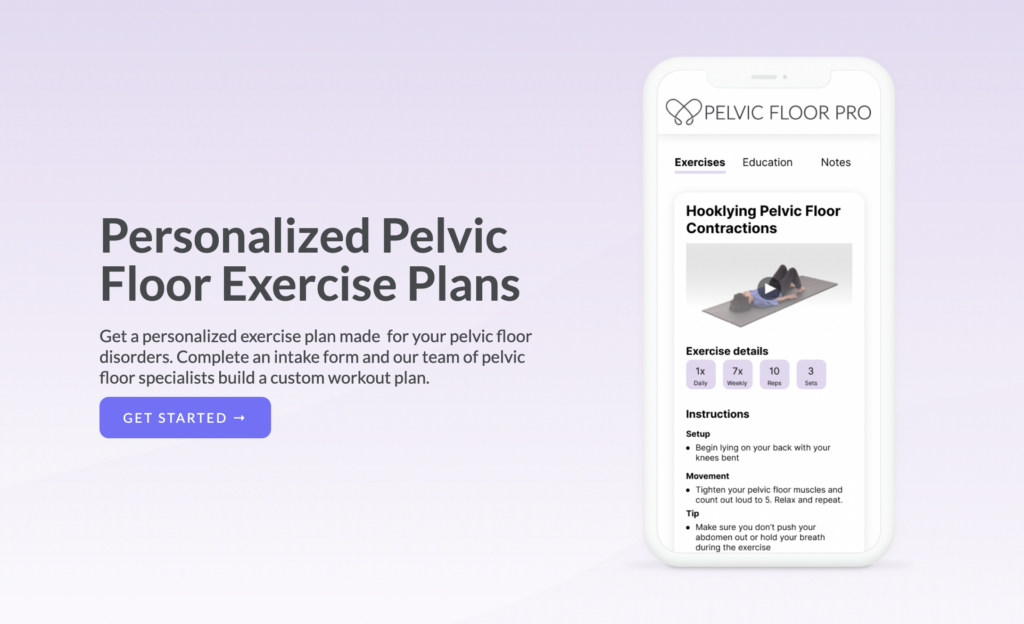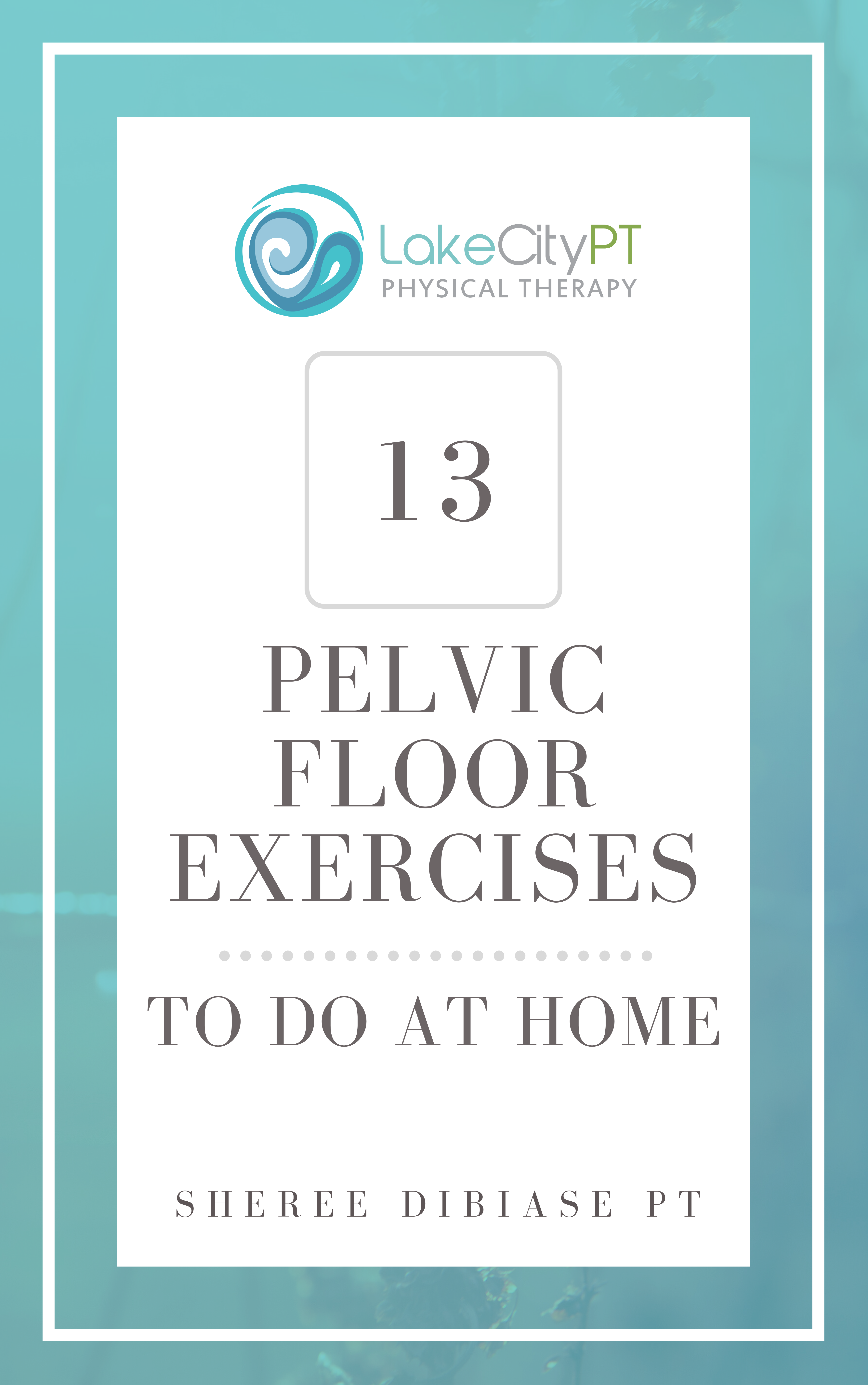SIBO and Pelvic Floor Dysfunction
SIBO and pelvic floor dysfunction are often comorbidities. SIBO is often a cause of pelvic floor dysfunction and it is something very often overlooked. One in five US Americans have SIBO according to NUNM.
Pelvic floor PT can help you reducing bloating caused by SIBO and improve your quality of life.
Related Articles
Get Personalized Therapy for Your Pelvic Floor Dysfunction
Improve pelvic floor dysfunction symptoms in only 2 – 3 months from home.
With targeted exercise alone most women can improve their pelvic floor function in 60 to 90 days. Generic exercises won’t get these outcomes, only personalized plans based on your symptoms. This is why intake forms and professional plans are so important.
Learn more with the button below.
What is SIBO?
Small bowel bacterial overgrowth (SIBO) is characterized by an abnormally large number of bacteria in the small intestine. This usually occurs when the ileocecal valve at the junction between the small and large intestines does not close properly. This causes food to move too quickly from the stomach into the small intestine, and the rapid transit time allows for bacterial overgrowth to occur.
Typically, the small intestine has a limited number of bacteria responsible for nutrient assimilation. In SIBO, the pathogenic organisms can replace the regular floor of the small intestine. The microorganisms are from another part of the gastrointestinal tract or outside the gastrointestinal tract. When these bacteria increase, they can cause injury to the small intestine lining and interfere with nutrient absorption.
What is Pelvic Floor Dysfunction?
A pelvic floor dysfunction is a group of symptoms associated with the muscles and nerves in the pelvis. Although it’s not a disease, it can significantly limit a person’s quality of life. The pelvic floor supports the bladder, urethra, uterus, vagina, small bowel, and rectum.
Damage to these structures may lead to lower back and hips problems. These problems include severe pain and sciatica (pinched nerves), bowel or bladder control issues, sexual dysfunction, and chronic pelvic pain.
Common Causes of Pelvic Floor Dysfunction
Pelvic floor dysfunction is often the result of physical trauma, infection, surgery, radiation therapy. Also, specific conditions that weaken muscles and nerves in this body region may cause these conditions. Examples include:
- Uncontrolled bladder or bowel issues
- Pelvic or abdominal surgery that could have injured the pelvic floor muscles and nerves
- Childbirth that was traumatic to the pelvic floor
- Infections that have affected the nervous system or muscles in the pelvis, such as endometriosis, yeast infections, and chronic prostatitis
- Neurological diseases, such as Parkinson’s disease and multiple sclerosis
- Uncontrolled constipation or diarrhea leading to repeatedly straining during a bowel movement
- Some pelvic floor disorders, such as urinary incontinence and fecal incontinence, commonly develop with other medical conditions.
Causes of SIBO
Since much of the small bowel’s job is to boost nutrient absorption, anything that interferes with its normal function can cause SIBO. This includes:
- Small intestine dysmotility
- Continous use of some medication
- Chronic pancreatitis
- Celiac disease
- Crohn’s Disease
- irritable bowel syndrome (IBS)
- Gastroparesis – a condition in which the stomach muscles are weak, causing bloating and early fullness after eating. In some cases, this may result from diabetes or scleroderma.
- Lack of proper digestive enzymes
- Surgical reconstruction or removal of part of the small intestine or stomach
- Intestinal resection – This is when a segment of the small intestine needs removing because it is no longer functioning correctly. The diseased portion of the bowel may then be reattached to an area higher in the GI tract that still functions.
Symptoms of SIBO and Pelvic Floor Dysfunction
The following are common symptoms associated with SIBO, listed in order by frequency:
- Bloating
- Belching
- Flatulence
- Abdominal pain
- Diarrhea
- Constipation
- Weight loss Gas &
- Fatigue
The following are common symptoms associated with pelvic floor dysfunction, listed in order by frequency:
- Abdominal pressure
- Urinary urgency
- Bowel urgency
- Pelvic/abdominal pain
- Pain during intercourse
- Frequent or urgent urination
Are SIBO and Pelvic Floor Dysfunction Linked?
Many of the symptoms associated with SIBO can also affect the muscles and nerves in the pelvis:
- Gas and bloating: When bacteria are overgrown, they produce excess gas that can lead to abdominal distention and discomfort.
- Abdominal pain: Many people with SIBO report a gnawing, aching abdominal sensation in the upper abdomen or lower chest.
- Nausea: Occurring in some cases of SIBO, nausea can also be a symptom of pelvic floor dysfunction when caused by constipation or tumors.
- Diarrhea: Watery stool is often the result of SIBO, leading to dehydration.
Solutions to Pelvic Floor Dysfunction
Regulating digestive health can be achieved by stabilizing blood sugar, correcting hormonal imbalances, taking probiotics, and repairing the gut lining. Incorporating exercise into your routine is beneficial for overall health and wellness. As always, it’s best to consult with a medical professional before starting any new treatment plan. Below are some of the solutions to Pelvic floor dysfunction;
- Pelvic floor physical therapy: Pelvic floor physical therapy is a type of exercise that can help strengthen the muscles in your pelvis. The therapist will teach you exercises that target the specific muscles you need to tone and then watch you do them while they provide feedback on how to improve your technique. These exercises can be done in the comfort of your own home.
- Relaxation techniques: Learning how to relax your pelvic muscles is the first step toward regaining bladder control. You can do this by inserting a finger or two into the vagina and squeezing the muscles you usually use to stop urinating midstream. Hold for 10 seconds, then release for another 10 seconds.
- Biofeedback: Biofeedback allows you to see on a monitor what your pelvic floor muscles are doing and how hard they’re working. You can use this information to coordinate your breathing with the work of your pelvic muscles and learn how to activate them correctly.
- Medications: If pelvic floor physical therapy isn’t enough, your doctor might prescribe a drug that relaxes the muscles in the uterus and bladder. These medications can help control urgency and incontinence, but they can cause side effects such as loss of bladder control or an overactive bladder.
Solutions to SIBO
Regulating digestive health can be achieved by stabilizing blood sugar, correcting hormonal imbalances, taking probiotics, and repairing the gut lining. Incorporating exercise into your routine is beneficial for overall health and wellness.
As always, it’s best to consult with a medical professional before starting any new treatment plan. Below are some of the solutions to SIBO;
- Antibiotics: These medications target and kill harmful bacteria in your digestive system.
- Diet modification: Identifying and eliminating all sources of food that trigger symptoms such as gas, bloating, abdominal pain, diarrhea, or constipation can help regulate the gastrointestinal system.
- Probiotics: Replacing the good bacteria in your gut can help restore the balance of bacteria in your digestive system.
- Natural remedies: Other natural remedies such as turmeric can relieve constipation and indigestion, peppermint oil promotes bile flow to digest food and ease gas and bloating. At the same time, fennel seed has carminative properties that can help with gas and stomach cramping.
In Conclusion
Pelvic floor dysfunction and SIBO are devastating conditions that can significantly diminish the quality of life. The good news is that both can be treated successfully with the proper therapies and lifestyle modifications, producing an improved quality of life.
If you suffer from any of the symptoms associated with pelvic floor dysfunction, it is best to make an appointment with a medical professional for diagnosis and treatment. Book an appointment with Lake City for physical therapy today and do away with pelvic floor dysfunction.



